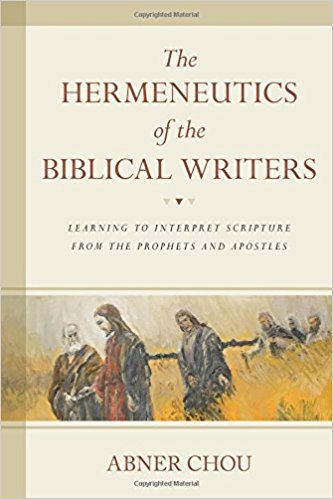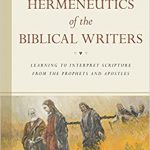(#AmazonAdLink)  When I was in Bible College, I was taught that our modern practices of hermeneutics differ from those used by the biblical prophets and apostles themselves. I was told in class that while the biblical authors used allegory and typology (cf. Gal 4:24-25), this is not something we are allowed to practice today as good students of Scripture. The reason, I was told, was because they were inspired and we are not.
When I was in Bible College, I was taught that our modern practices of hermeneutics differ from those used by the biblical prophets and apostles themselves. I was told in class that while the biblical authors used allegory and typology (cf. Gal 4:24-25), this is not something we are allowed to practice today as good students of Scripture. The reason, I was told, was because they were inspired and we are not.
But it turns out that not even the biblical authors practiced allegory and typology. Instead, Abner Chou points out in his book, (#AmazonAdLink) The Hermeneutics of the Biblical Writers, that the hermeneutical methods practiced by most of the conservative evangelical scholars of today appears to be the same hermeneutical methods practiced by the biblical authors, as well as Jesus Himself.
For them, as for us, contextual issues about authorial intent were paramount, which requires a knowledge of historical, grammatical, cultural, and theological contexts. Chou shows that these sort of “modern” hermeneutical rules are not modern at all, but have been followed and practiced since Moses sat down to write the words of God for the people of Israel to read and understand.
If you want to understand the Bible better, and also all the prophets and apostles, including Jesus Himself, read and understood Scripture, I highly recommend Chou’s book.
I do have a few caveats, of course. For example, I take issue with his criticism of a Christocentric reading of Scripture (p. 133), and also with his take on trajectory hermeneutics (p. 226). But one can disagree with Chou on these sorts of issues and still accept the broader idea that the hermeneutical principles we practice today are not modern inventions, but have been practiced, taught, and followed by all the writers of Scripture since the first words of Scripture were written.
If you want to read the book, you can (#AmazonAdLink) get it on Amazon.




Leave a Comment or Question